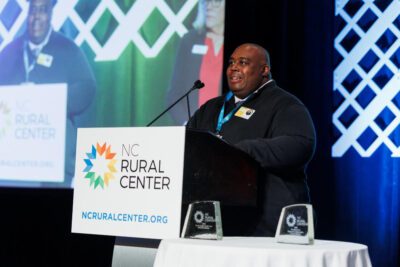
|
|
Correction on March 13, 2024: In the spreadsheet, the total fund balance and fund balance as a percent of expenditures have been corrected for 2022 and 2023 for Nash/Rocky Mount Schools, New Hanover County Schools, Newton/Conover Schools, Northampton County Schools, and Onslow County Schools. The text in the article has been updated to reflect the changes.
In the face of school choice expansion and the federal funding cliff and with the promise of Leandro funding hanging in the balance, fund balances — which operate like savings accounts for public school districts — are likely to play a key role in budget planning for districts in the 2024-25 school year.
The Local Government Commission — a commission within the state treasurer’s office — annually collects fund balance data for North Carolina’s 115 school districts. In an email to EdNC from the LGC back in 2020, fund balances were described as “a savings account that schools can use” if they have unanticipated expenses or opportunities.
Data on Opportunity Scholarships does not have to be reported by the N.C. State Educational Assistance Authority (NCSEAA) to the N.C. Department of Public Instruction (DPI) until Oct. 15 (search the budget bill for “Opportunity Scholarship Financial Impact Report/Reinvestment in Public Schools” to see the provision). Even if NCSEAA is able to release data on applications and scholarships sooner by county, that data will include students already in private school. Only DPI will be able to determine how many of the students who apply and receive the voucher were in public schools in 2023-24.
That means districts may be left flying blind in April and May as they put together their master schedule and local budget requests for the 2024-25 school year. Because parents often don’t withdraw their students, districts won’t know until school starts how many students they are losing. For districts, that matters because public school funding is based on average daily membership (ADM).
The money in these fund balances is local money: money the districts get from their county commissioners. It is not the cash they get from the state or federal government.
However, money districts get from the state or federal government can impact how much districts can save in their fund balance. For example, the unprecedented influx of federal dollars during the pandemic provided cash districts could use which helped many increase their fund balance.
Sign up for the EdDaily to start each weekday with the top education news.
What’s enough when it comes to a fund balance?
EdNC previously reported:
Philip Price, the former long-time chief financial officer for the State Department of Public Instruction, said that good practice is to keep a minimum of 8% of yearly expenditures in a school district’s available fund balance. That’s about one month worth of expenses.
But the LGC said that’s not necessarily true. They said the 8% rule doesn’t apply when it comes to parts of the government that can’t levy taxes — like schools. Instead, the Local Government Commission recommends that districts have an agreement with their county about how much their fund balance should be.
This is because some counties might be more willing to give schools funds when they need it for emergencies. If that’s the case, the school district may not need as high of a fund balance. Alternatively, some counties are less willing, and in that case, districts would need a higher fund balance.
A negative available fund balance usually means that liabilities in the local current expense fund outweigh cash on hand. The total fund balance, however, includes assets other than cash. So even if the available fund balance is negative, the total fund balance could still be positive, according to the Local Government Commission. But a negative available fund balance means that a district doesn’t have that extra savings they can spend in the event of an emergency.
EdNC’s previous reporting on fund balances


District fund balances from 2013-2023
Here is the data we are using. Take a look.
Our spreadsheet includes data for 2013, 2019, 2022, and 2023. In addition to the fund balance, the LGC also provides us with data on the fund balance available as a percentage of district expenditures.
Note that since the last time EdNC reported on fund balances, the new data from the LGC updates all of the 2022 data in addition to providing 2023 data. Data is not available for six districts in 2023.
Only two districts in 2023 have negative fund balances: -$200,619 in the Graham County Schools and -$916 in the Clay County Schools. The largest fund balance is $115,722,272 in the Wake County Public School System. The average fund balance is $6,179,111.
Fifteen of 115 districts have fund balances that are less than 8% of expenditures: Graham County Schools, Clay County Schools, Swain County Schools, Rutherford County Schools, Alamance-Burlington School System, Northampton County Schools, Cabarrus County Schools, Guilford County Schools, Chapel Hill/Carrboro City Schools, Macon County Schools, Charlotte-Mecklenburg Schools, Dare County Schools, Carteret County Schools, Beaufort County Schools, and Union County Schools.
Fifty-nine of 115 districts have less money in their fund balance in 2023 than they did in 2022, 50 have more money, and we are missing data on six.
Seven of 115 districts have saved more than $2 million since 2022: Wayne County Schools, Randolph County Schools, Wilson County Schools, Charlotte-Mecklenburg Schools, Onslow County Schools, Winston-Salem/Forsyth County Schools, and the Wake County Public School System.
Fifty-four districts have less money in their fund balance in 2023 than they did in 2013.
Last year, the legislature did not pass a state budget until Sept. 22, 2023, and EdNC has previously reported that districts rely on fund balances when there is a budget delay and budget uncertainty ahead of the start of the new school year.
If the state budget is late this year, then along with the loss of ADM due to school choice expansion and the federal funding cliff, districts could be facing more financial pressure than even healthy fund balances could address.
Recommended reading




